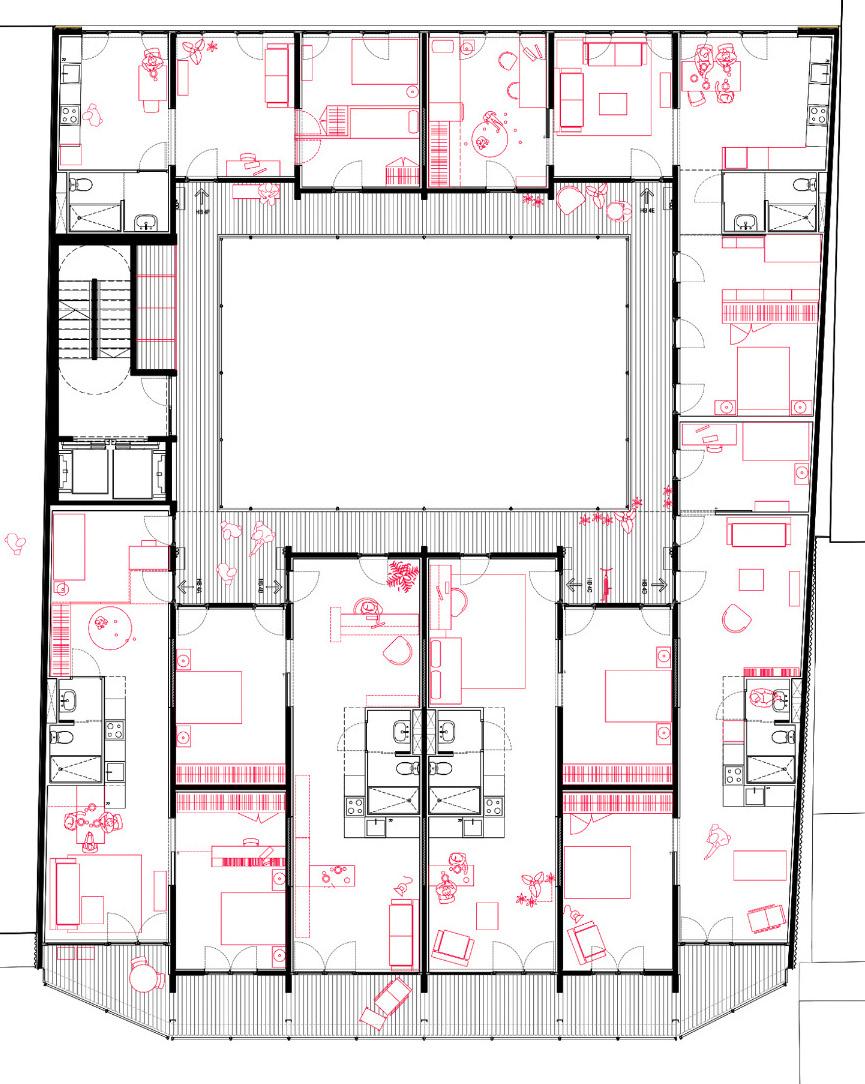
3 minute read
Iakovos
source: Lacol (n.d.) La Borda in Barcelona von Lacol, drawing, Detail, Available at: https://www. detail.de/de/de_de/la-borda-inbarcelona-von-lacol (Accessed: 26 January 2023).
them more or less, they are articulated, designed and constructed in such way where individual personalization, and community evolution can be flexible. Starting by the core of the units˙ it is the result of collaborative process among some members of Lacol and La Borda, where current users expressed their opinion on how they will like the arrangement of those immovable facilities, such as kitchen. The core was defined in such way in order to give as much as possible free space to be appropriated by the residents –another aspect of the common space, which consider it as a flexible sociospatial structure that allows its users to appropriate and transform it. This intention was encouraged and forced by the idea of giving to the residents the possibility and the tools to add some extra no-loaded CLT panels for room separation. This idea of allowing future modifications of room’s area in autonomous way, actually, goes even further. La Borda –through the help of La Dinamo- managed to ensure legally the spatial modifications among every two units by the exchange of modules –or how Lacol source: Lacol (n.d.) LA BORDA HABITATGE COOPERATIU, drawing, Lacol, Available at: https://www.lacol.coop/ projectes/laborda/ (Accessed: 26 January 2023). calls them satellite modules. In detail, in every floor the units are separated into pairs where satellite modules are introduced in-between the main ones of each of the units. In case of change in a household instead of changing unit, or even moving to a new building, residents can agree to give or take a satellitemodule. This is facilitated by the chosen structure of CLT building panels, where their modularity gives the flexibility of changing or introducing an opening on one of these walls, even after the construction site of La Borda. In this way La Borda, for once again, it is perceived as a big family of cooperative members. It can be described as a genius idea, where collaborative housing project is rediscovered and redefined by its own residents, securing common space throughout the time to the scale of the private units.
Advertisement
Diagrams of the main modules of the housing units of the CHP of La Borda. They indicate the flexibility and modularity of their main core, the kitchen, whilst having enough free space to be appropriated by the future residents, and therefore be personalized.
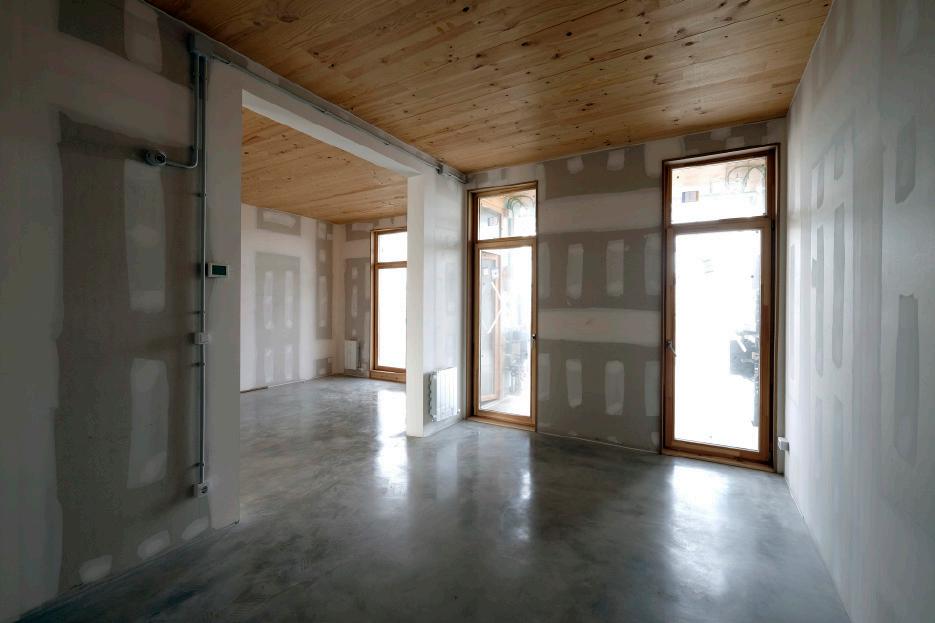
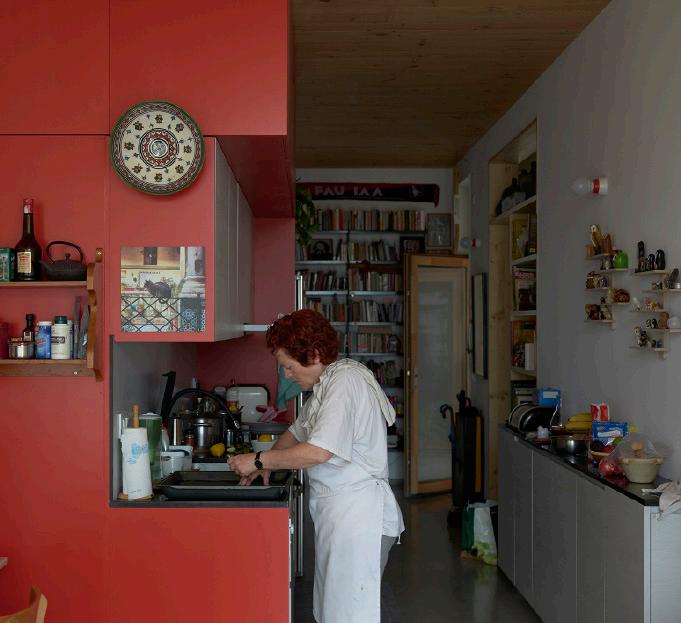
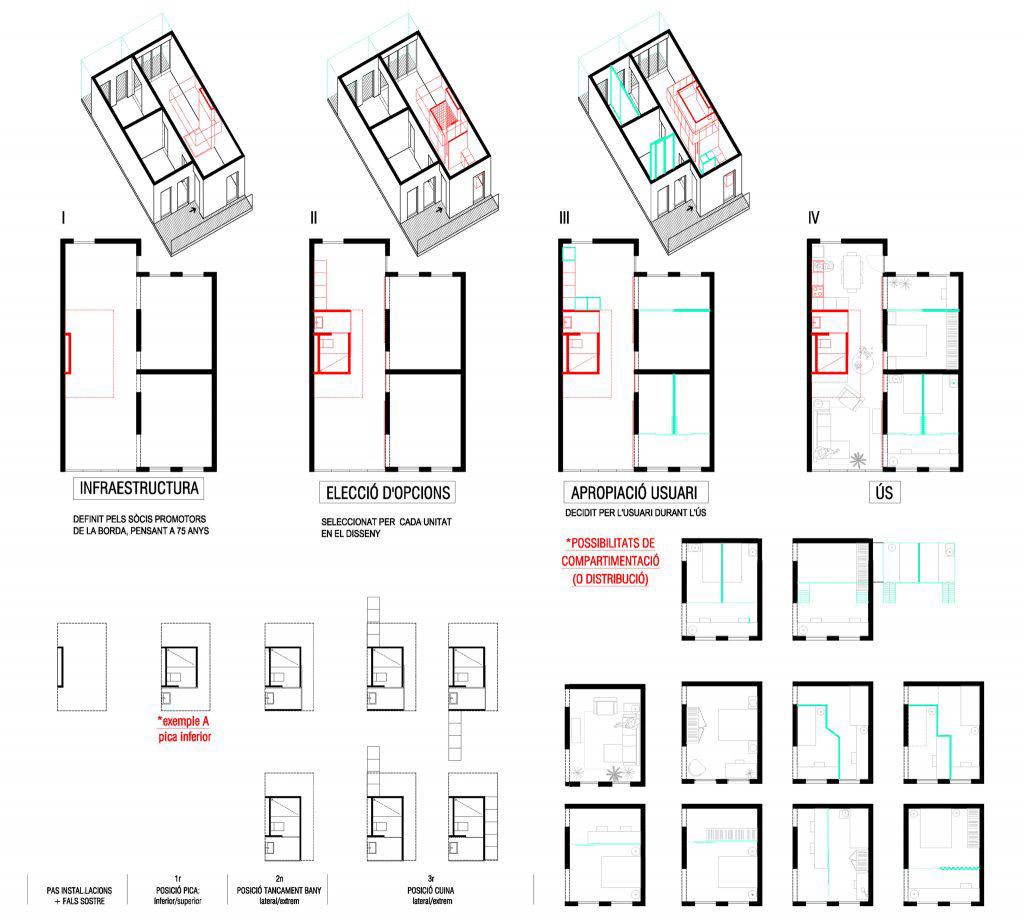
Diagrams of the different spaces that the housing modules are assembled by. The main modules in green color and the satellite modules in yellow, situated in-between every pair of housing units. They visualize the future possibility of expansion or exchange of one of these satellite modules between the future co-residents. At the same time the spatial configurations resulting with different sizes, giving the flexibility to the families of La Borda, in any case of possible changes.
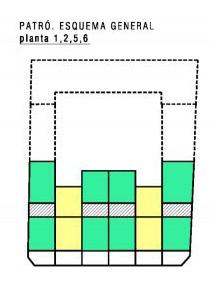
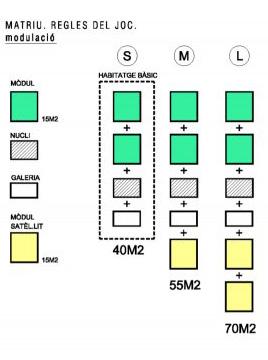
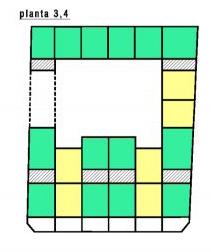
It is worth to mention, that alike the aforementioned community infrastructures designed by Lacol for the community of Can Batlló, such as the Block 4 and Block 11, La Borda in its majority was realized by construction experts and technicians. A participation in the construction process was allowed, intentionally or not, only in the communal spaces, and specifically for the meeting point on the ground floor. It is the result of community participation in the construction process, letting the members of La Borda to define and creating more easily connections with their future habitat. The reasons, which didn’t give the potential for a further community participation in the construction process, were probably that La Borda had not yet developed their practices in such way to enable participation to take place in a bigger scale.
Nevertheless, having in mind such a complexity of sociospatial relations and configurations among the city makers and local community, taking in consideration the final step of the construction phases all the way back to the initiatives of the grassroots movement of the site of Can Batlló, we should be now more acknowledge about the multiplicity of common space and commoning process. It is worth to mention again, that Lacol, during their active participation in the area of La Bordeta, understood La Borda as a community within the community. We can perceive it as a community infrastructure, both as a wholesome and as a part of a bigger ecology. An autonomous entity which has its own values and relations with the surroundings.










